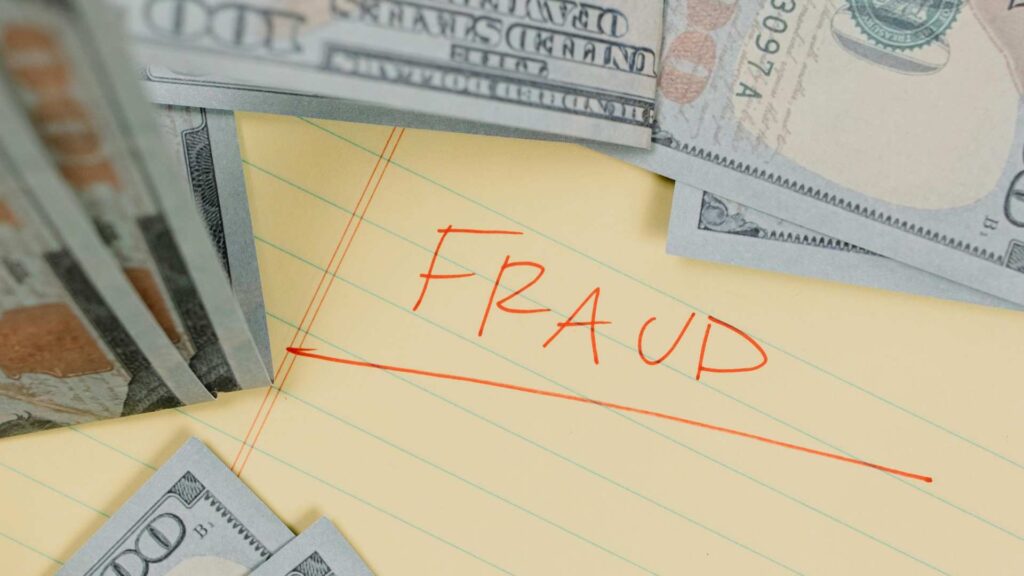Running a business in a high-risk sector like crypto, coaching, dating, or adult content can be rewarding, but it comes with serious challenges. One of the biggest challenges is managing fraud. In 2025, fraud ratios are under close watch by banks, payment processors, and card networks. So, if your business has too many chargebacks or suspicious transactions, you may face fines, get blocked from accepting payments, or lose your merchant account altogether.
That is why keeping fraud under control is not just good practice, it is a key part of staying in business. In this article, we look at what fraud means in high-risk industries, what causes high fraud ratios, and what steps you can take to reduce them.
Why fraud is a bigger problem in high-risk industries
Fraud happens in every sector, but some industries get targeted more than others. Businesses in the industries mentioned above, like coaching, dating, adult services, or crypto, tend to attract more disputes and chargebacks for a number of specific reasons.
First, customers may regret their purchase or feel misled. For example, someone might buy a coaching package and later feel it did not meet expectations. Or someone might sign up for a dating platform and forget they agreed to a recurring payment.
Second, these industries often rely on digital goods or services that are harder to prove in a dispute. If there is no physical product or shipment, it is easier for a customer to claim that they never received what they paid for.
Third, fraudsters sometimes use stolen credit cards to make purchases in these sectors, knowing that the nature of the products makes it harder to trace and harder to recover losses.
What happens when fraud ratios go too high
Visa, Mastercard, and other card networks track your chargeback and fraud rates, and they set clear limits. If your business goes over these limits, you could be placed in a fraud monitoring program. These programs come with strict rules and extra fees. In some cases, payment processors may terminate your account.
In 2025, Visa’s updated rules under programs like VAMP, expect merchants to stay below a 0.9 percent dispute ratio. Anything above 1.5 percent is considered excessive. For fraud ratios, limits are often set at around 0.2 percent of total sales value.
Once your business is flagged, it is difficult to fix your reputation. That is why it is important to prevent fraud before it becomes a serious problem. Here are some steps:

Step 1: Be clear and honest in your offer
One of the simplest and most effective ways to reduce fraud is to be honest and transparent. Many disputes happen not because of criminal activity, but because customers feel confused or misled.
If you sell coaching services, be clear about what the customer will get. List the number of sessions, the format (video call, email, etc.), the time frame, and any refund conditions.
If you run a dating platform, make sure your terms are easy to understand. Avoid automatic renewals unless you clearly state them at checkout. Send reminders before billing if the subscription is recurring.
For adult services, avoid unclear wording or misleading promises. If your product is a subscription, one-time offer, or digital access, make that very obvious.
Simple language, a clean layout, and clear calls to action help avoid misunderstandings that lead to disputes.
Step 2: Use strong customer verification tools
Many fraudulent transactions come from stolen credit cards or fake identities. To reduce these, you should use tools that verify customers before processing payments.
Start with Address Verification System (AVS) and Card Verification Value (CVV) checks. These are basic but effective steps to stop simple fraud.
Next, consider 3D Secure 2.0. This tool adds a layer of protection and shifts the liability for fraud to the card issuer in many cases. It may add a few seconds to the checkout process, but the trade-off in protection is worth it.
In the crypto and adult sectors, using ID verification tools can help. Services like Jumio or Onfido allow you to confirm the identity of users. This helps reduce fake accounts and can protect your business in case of disputes.
Step 3: Improve how you handle billing and descriptors
One of the biggest sources of chargebacks is when a customer does not recognize a charge on their card. If your billing name is different from your brand name, you are asking for trouble.
Make sure your billing descriptor matches your business name or the product name the customer expects. If space is limited, include an email or phone number, so the customer can reach out before contacting the bank.
Also, send confirmation emails right after purchase. Include the amount charged, the date, and what the customer will receive. This creates a digital paper trail that helps in case of a chargeback.
For subscription services, send a reminder email before the next billing cycle. This small step can prevent customers from calling their bank and disputing the charge.

Step 4: Provide responsive and friendly customer support
Many people file chargebacks simply because they cannot reach support. If they feel ignored or get no answer, they go straight to their bank.
A fast and polite customer support team can stop most issues before they become disputes. Set up a system to reply within 24 hours. Offer support by email and chat. If possible, add a phone line.
Use clear language and always try to offer a solution. Even a partial refund or a free month of service may be better than a chargeback that costs you fees and hurts your fraud ratio.
Step 5: Monitor your metrics regularly
In 2025, payment providers expect you to know your own numbers. Do not wait for Visa or your processor to tell you that your fraud ratio is too high.
Check your fraud and dispute rates every week. Most payment platforms provide a dashboard with this information. If you see an increase, investigate it right away.
Maybe a new marketing campaign is attracting the wrong customers. Maybe a landing page is causing confusion. Maybe fraudsters are testing stolen cards on your checkout. The sooner you find the cause, the faster you can fix it.
Some businesses also use third-party fraud tools that track behaviour in real time. Services like Sift, Riskified, or Kount can flag suspicious patterns and help you take action.
Step 6: Train your team
If you have a team that handles billing, sales, or support, make sure they know how fraud works and what to watch for. Sometimes, small changes in tone, language, or timing can make a big difference.
Train staff to:
- Explain terms clearly
- Handle refund requests with care
- Avoid aggressive or pushy upselling
- Identify possible fraud patterns
Your team is your first line of defence. If they are well-trained, they can help protect your business.

Step 7: Use clear refund and cancellation policies to reduce fraud ratios
Unclear refund terms are a common cause of chargebacks. Make sure your policy is easy to find and written in plain language.
State how long a customer has to request a refund and under what conditions it applies. If you offer a free trial that turns into a paid subscription, remind the customer before billing and make cancellation easy.
Avoid putting refund policies in small print or legal jargon. The goal is not to hide, but to inform. If your policy is fair and easy to follow, customers are more likely to reach out before disputing a charge.
Bottom Line
Fraud is a real issue in high-risk sectors, however, with the right approach, you can manage it and keep your ratios under control.
Start by being honest with your offer and clear in your communication. Use tools to verify users and protect your payments. Make your billing easy to recognize, your support easy to reach, and your refund process simple.
Check your data often and act early when problems appear. Train your team and stay focused on giving customers a smooth, honest experience.
By doing these things, you reduce the risk of chargebacks, protect your business, and build a stronger brand. In 2025, staying ahead of fraud is not just about tools. It is about trust, clarity, and being ready to act when it matters.
If you want to know more about this matter, don’t hesitate to schedule a free consultation with our team.
For further insights, read our article: “10 Signs Your Business Risks Card Schemes Blacklisting“
Disclaimer
Widelia and its affiliates do not provide tax, investment, legal or accounting advice. Material on this page has been prepared for informational purposes only, and is not intended to provide, and should not be relied on for, tax, investment, legal or accounting advice. You should consult your own tax, legal and accounting advisors before engaging in any transaction. Please consult https://widelia.com/disclaimer/ for more information.









